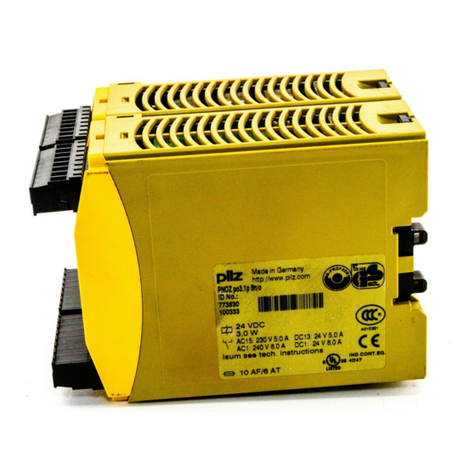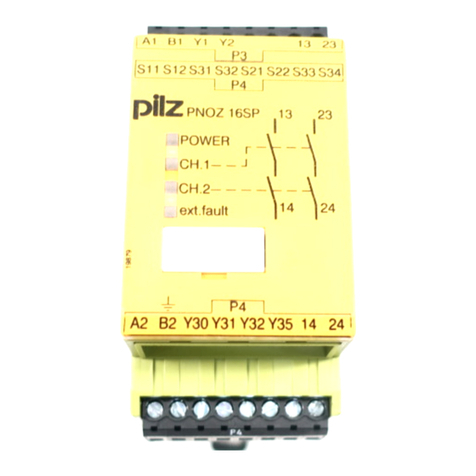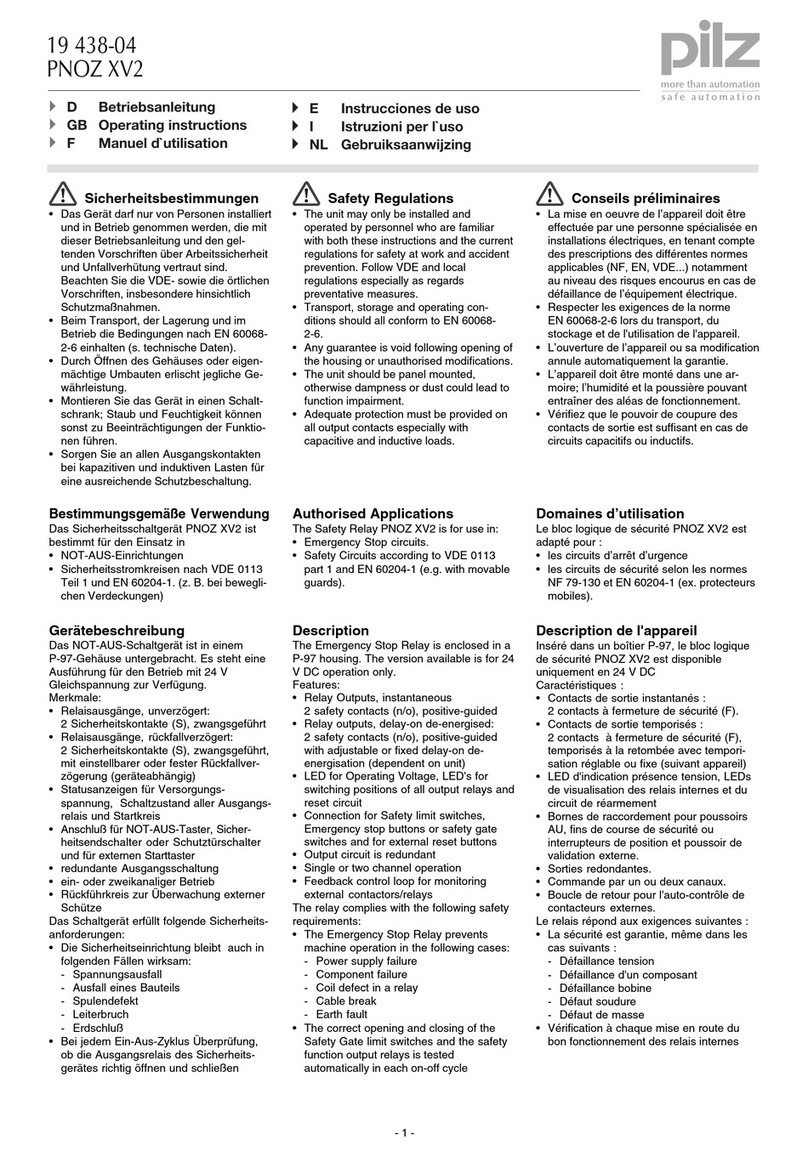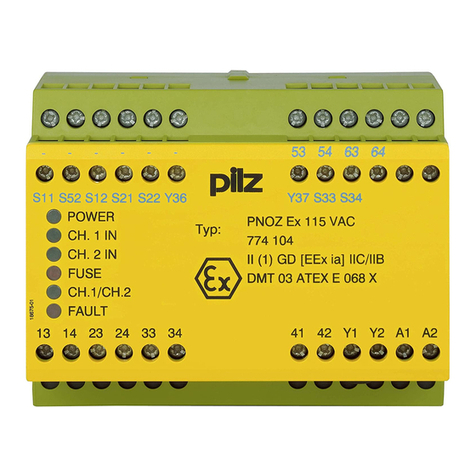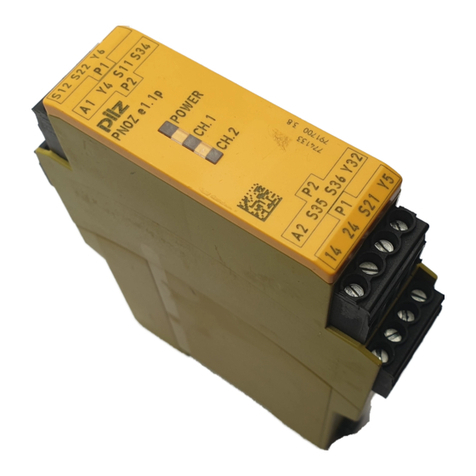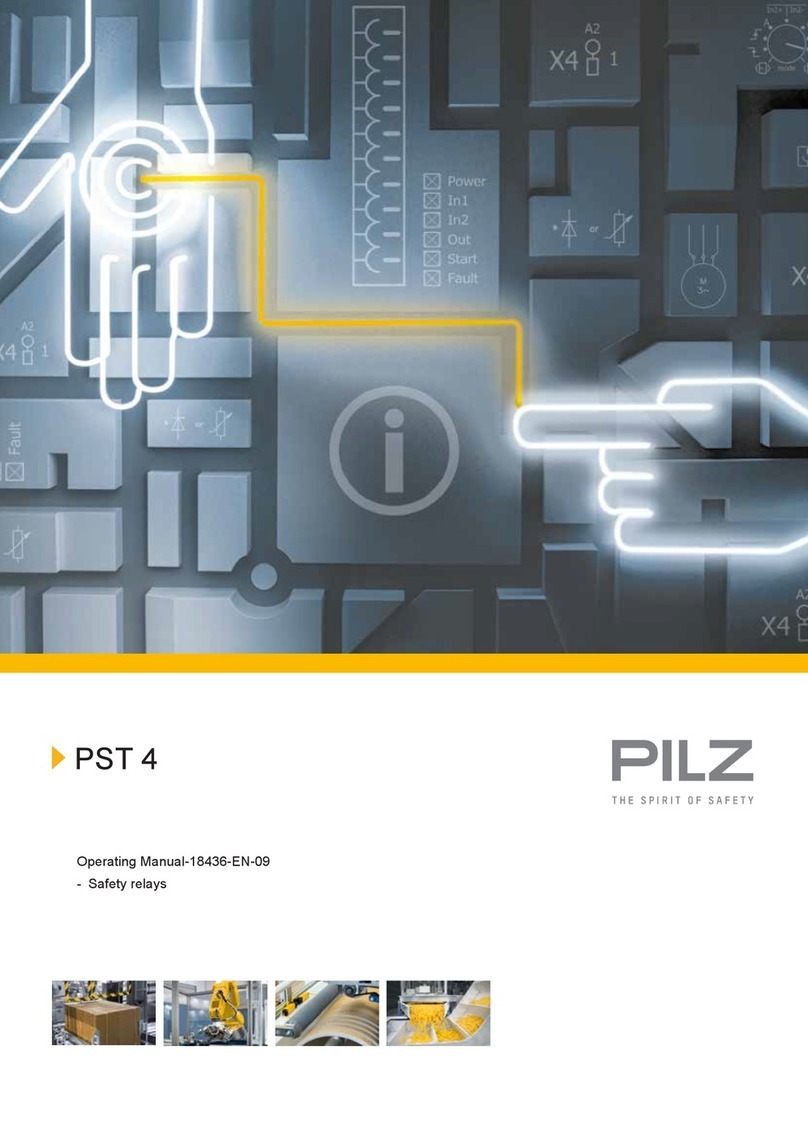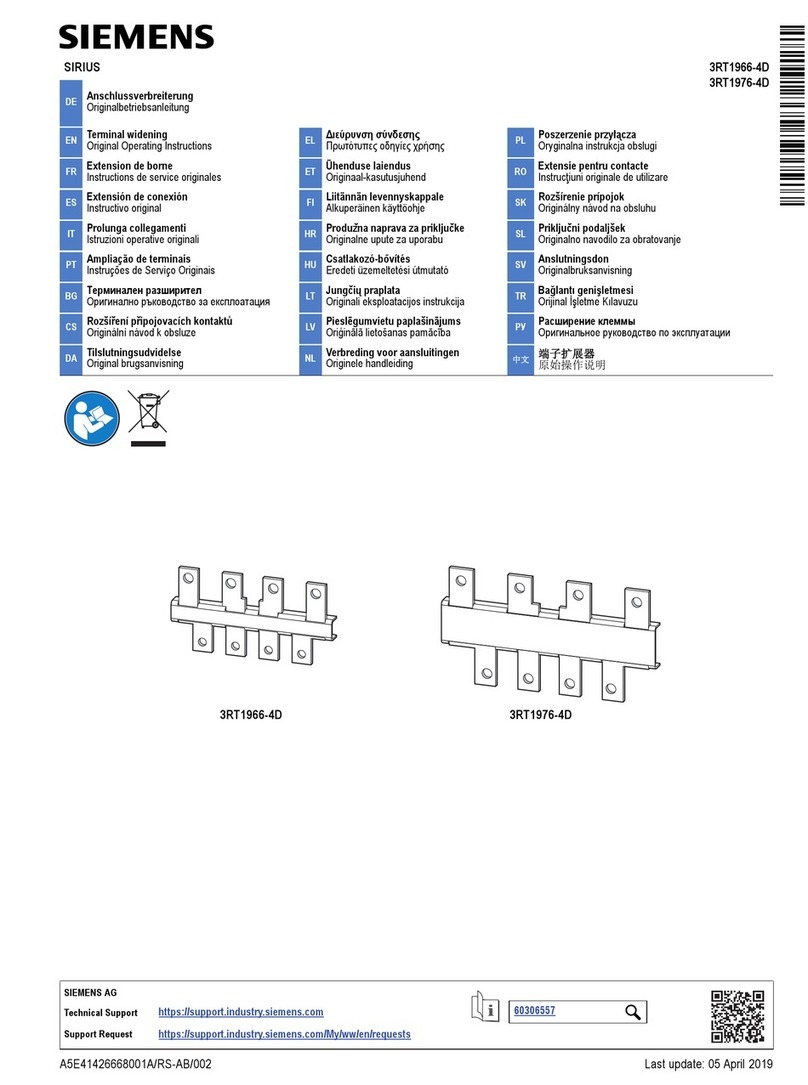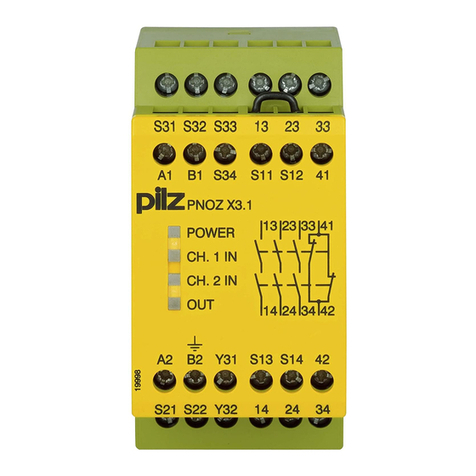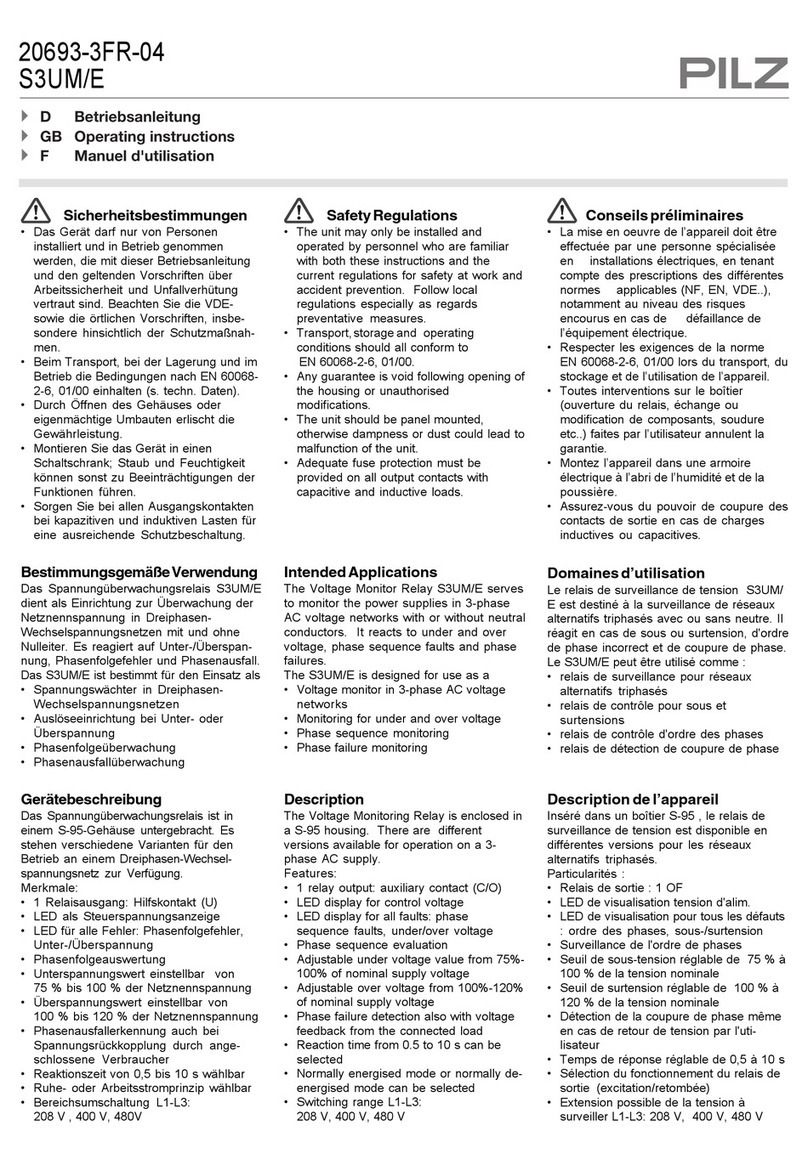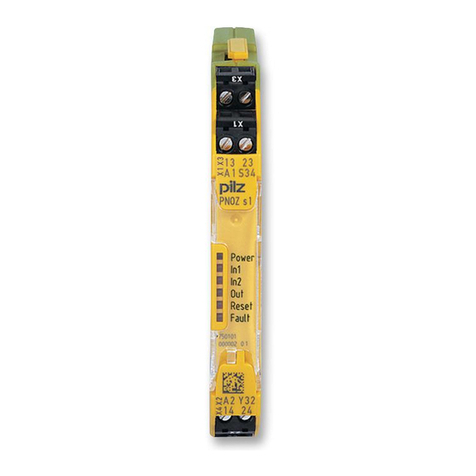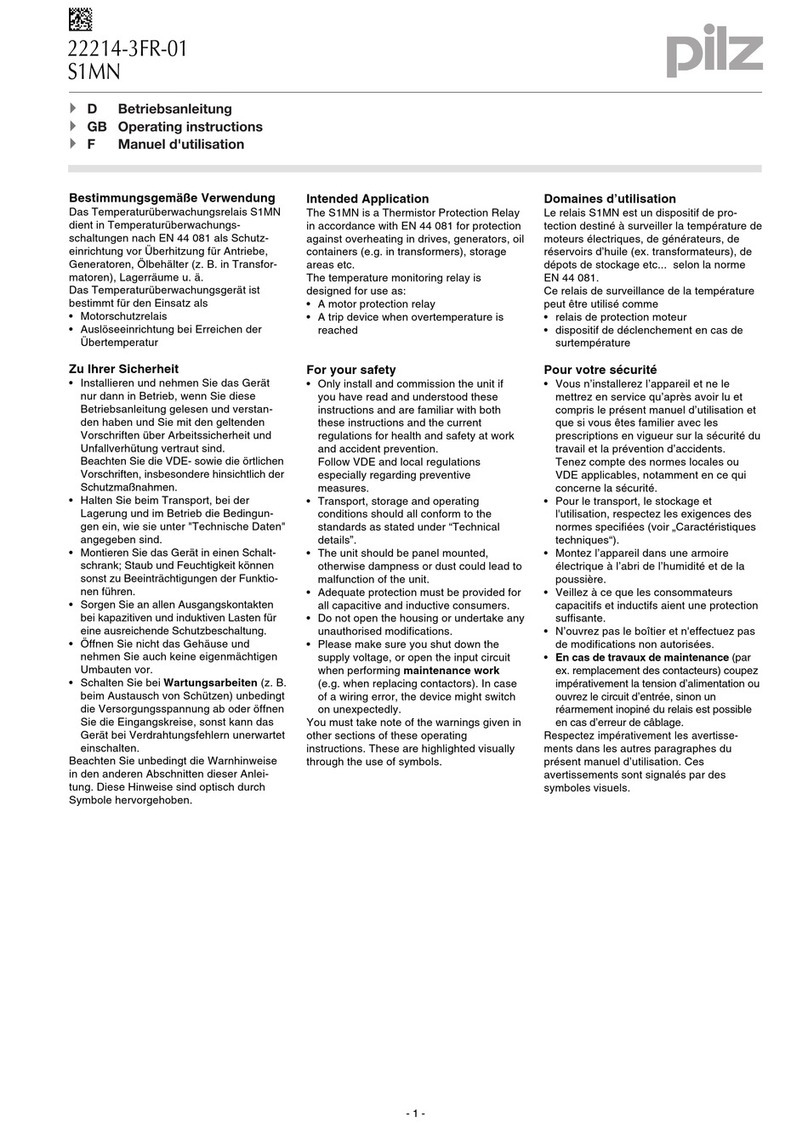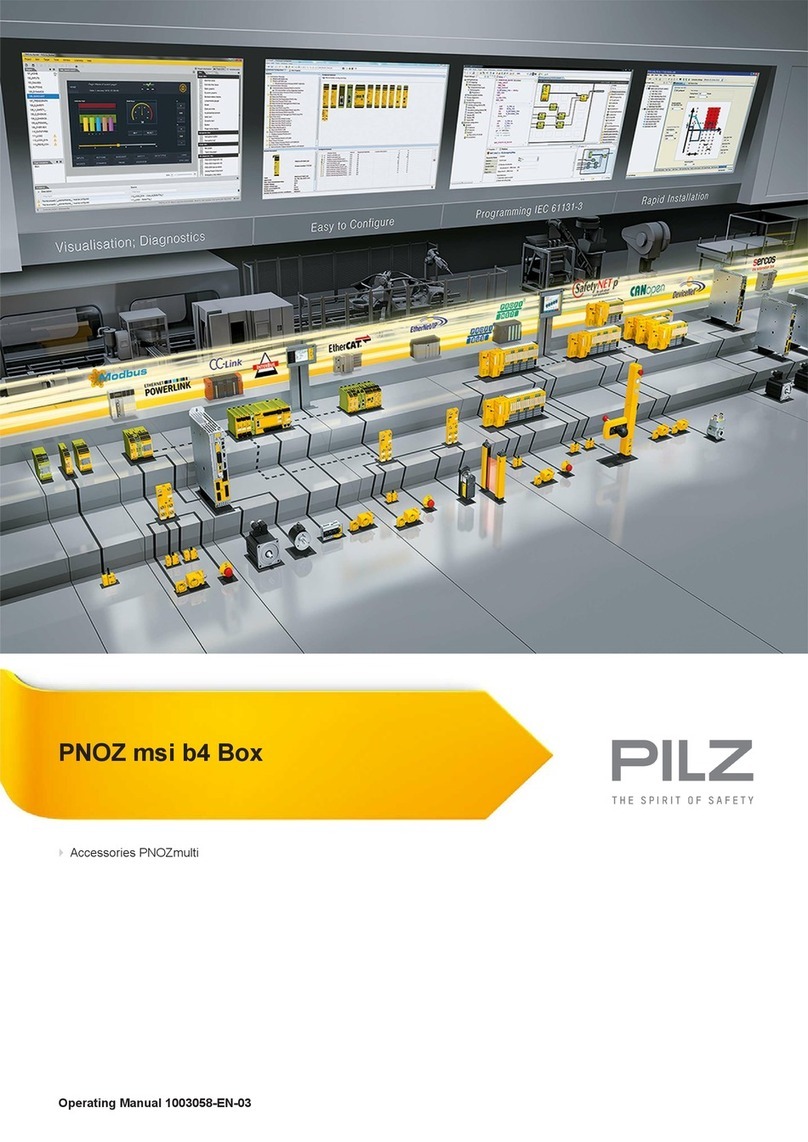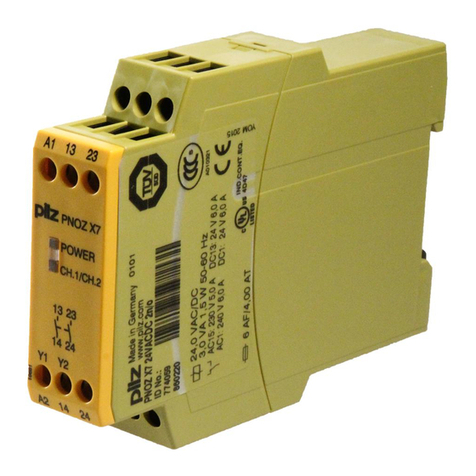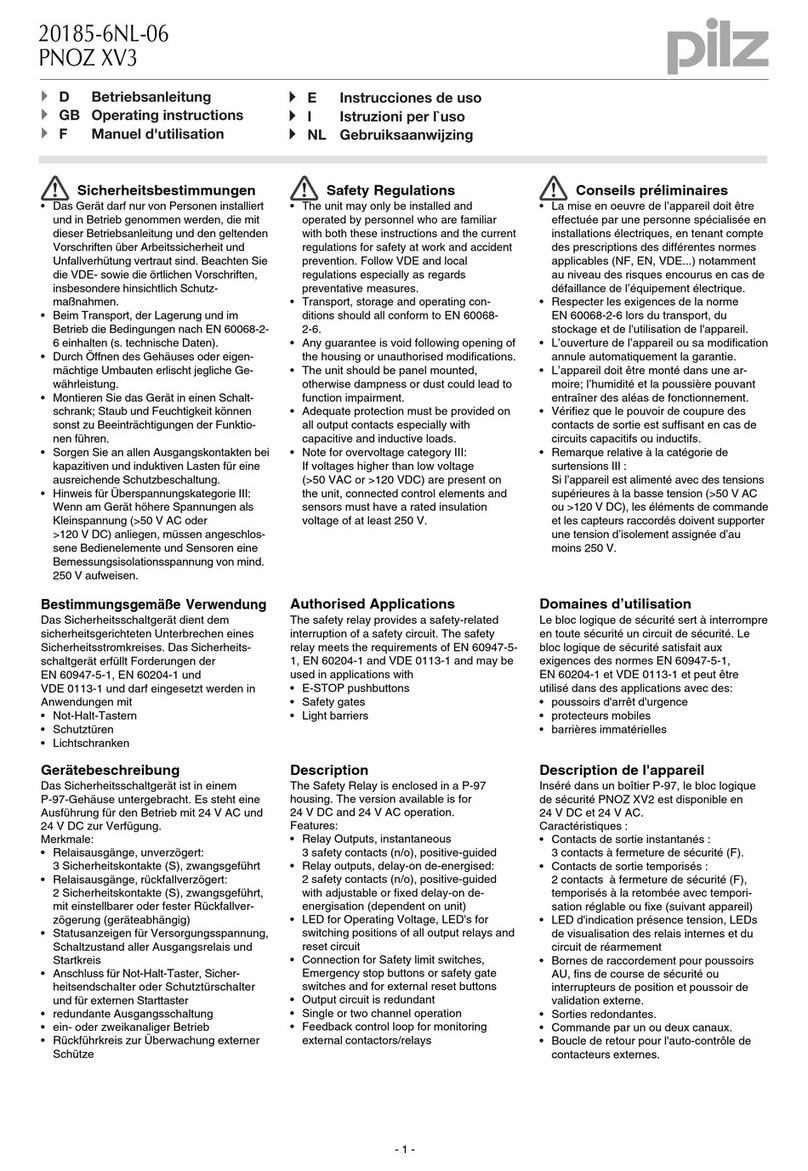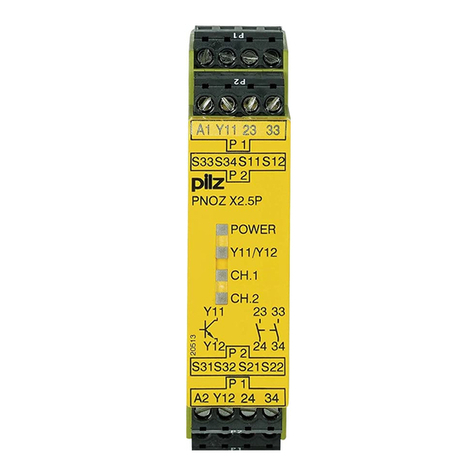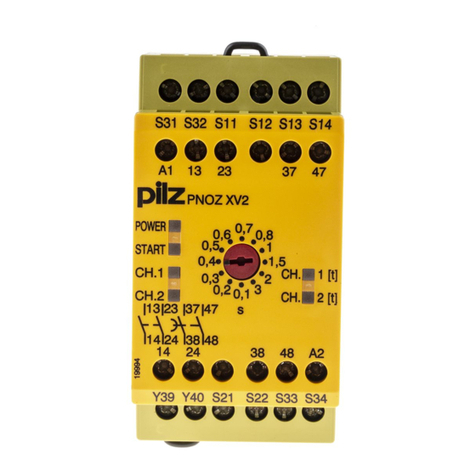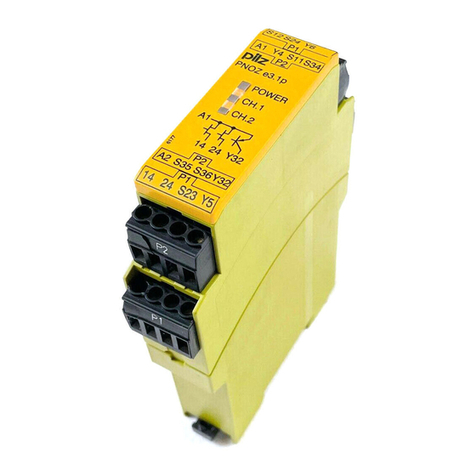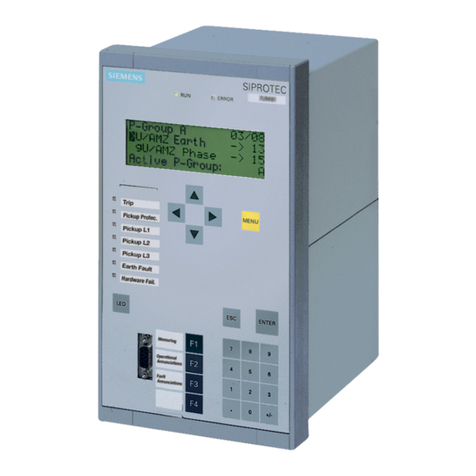
- 9 -
21061-04
PZE X4.1P
4E Instrucciones de uso
4I Istruzioni per l`uso
4NL Gebruiksaanwijzing
Prescripciones de seguridad
•
El dispositivo tiene que ser instalado y
puesto en funcionamiento exclusivamente
por personas que estén familiarizadas,
tanto con estas instrucciones de uso
como con las prescripciones vigentes rela-
tivas a la seguridad en el trabajo y a la
prevención de accidentes. Hay que obser-
var tanto las prescripciones VDE como las
prescripciones locales, especialmente en
lo que se refiere a las medidas de protec-
ción.
• Durante el transporte, el almacenaje y el
funcionamiento hay que atenerse a las
condiciones expresadas en EN 60068-2-
6 (véanse datos técnicos).
• Se pierde toda garantía en caso de que
se abra la carcasa o se lleven a cabo
modificaciones por cuenta propia.
• Montar el dispositivo dentro de un
armario de distribución; en caso
contrario es posible que el polvo y la
suciedad puedan afectar al
funcionamiento.
• Hay que cuidar de que haya un conexio-
nado de seguridad suficiente en todos
los contactos de salida con cargas
capacitivas e inductivas.
Campo de aplicación adecuado
El bloque de contactos PZE X4.1P
satisface los requerimientos según
EN 60204-1 y IEC 60204-1. Este
dispositivo sirve como dispositivo de
ampliación para el reforzamiento y la
multiplicación de contactos para un
dispositivo básico. Los dispositivos
básicos son todos los
• dispositivos de seguridad con circuito de
realimentación
• sistemas programables de seguridad
con circuito de realimentación
• dispositivos con salidas por
semiconductor OSSD con circuito de
realimentación
La categoría a realizar según EN 954-1
depende de la categoría del dispositivo
base. No puede superar la categoría del
bloque de ampliación de contactos.
Descripción del dispositivo
El bloque de contactos se encuentra mon-
tado dentro de una carcasa S-99. La
tensión de alimentación es de 24 V DC.
Características:
• Salidas de relé: 4 contactos de seguridad
(NA), de guiado mecánico
• Separación segura de los contactos de
seguridad 13-14, 23-24, 33-34 de los
circuitos de entrada K1-U-K2 y del
circuito de realimentación Y1-Y2
• Conexión para circuito de realimentación
• Indicador de estado para el relé de salida
y la tensión de alimentación
• Bornes de tornillo o de muelle
La instalación de seguridad permanece
activa aún cuando falle uno de los
componentes.
Norme di sicurezza
• Il dispositivo può venire installato e mes-
so in funzione solo da persone che
hanno acquisito familiarità con le
presenti istruzioni per l’uso e le
disposizioni vigenti in materia di
sicurezza di lavoro e antinfortunistica.
Osservare le disposizioni della VDE
nonché le norme locali, soprattutto per
quanto riguarda le misure preventive di
protezione.
• Durante il trasporto, l’immagazzinamento
e il funzionamento attenersi alle condi-
zioni prescritte dalla norma EN 60068-2-
6 (v. Dati tecnici).
• Se viene aperta la custodia oppure se
vengono apportate delle modifiche in
proprio decade qualsiasi diritto di garan-
zia.
• Montare il dispositivo in un armadio elet-
trico; altrimenti la polvere e l’umidità pos-
sono pregiudicare le funzioni.
• Dotare tutti i contatti di uscita dei carichi
capacitivi e induttivi con un circuito di
protezione adeguato.
Uso previsto
Il modulo contatti PZE X4.1P è conforme
alle norme EN 60204-1 e IEC 60204-1.
Questo dispositivo funge da modulo di
espansione per l’aumento della portata e
del numero dei contatti per unmodulo base.
I moduli base sono tutti
• moduli di sicurezza con circuito di
retroazione
• sistemi di sicurezza con circuito di
retroazione
• dispositivi con uscite per semiconduttore
OSSD con circuito di retroazione
La categoria da realizzare secondo la
norma EN 954-1dipende dalla categoria del
dispositivo base. Essa non può essere
superata dal modulo di espansione contatti.
Descrizione
Il modulo contatti è inserito in una custodia
S-99. La tensione di alimentazione è di
24 V DC.
Caratteristiche:
• Uscite relè: 4 contatti di sicurezza (NA),
a conduzione forzata
• separazione sicura dei contatti di
sicurezza 13-14, 23-24, 33-34 dei
circuiti di ingresso K1-U-K2 e del circuito
di retroazione Y1-Y2
• collegamento per circuito di retroazione
• visualizzazione di stato per il relè di
uscita e la tensione di alimentazione
• a scelta con morsetti con gabbia a molla
oppure con morsetti a vite
Il dispositivo di sicurezza mantiene la fun-
zione di sicurezza anche in caso di guasto
di uno dei suoi componenti.
Veiligheidsvoorschriften
• Het apparaat mag uitsluitend worden
geïnstalleerd en in bedrijf genomen door
personen die vertrouwd zijn met deze
gebruiksaanwijzing en met de geldende
voorschriften op het gebied van arbeids-
veiligheid en ongevallenpreventie. Neem
de van toepassing zijnde Europese richt-
lijnen en de plaatselijke voorschriften in
acht, in het bijzonder m.b.t. de veilig-
heidsmaatregelen.
• Neem bij transport, bij opslag en in
bedrijf de richtlijnen volgens EN 60068-
2-6 in acht (zie technische gegevens).
• Het openen van de behuizing of het
eigenmachtig veranderen van de
schakeling heeft verlies van de garantie
tot gevolg.
• Monteer het apparaat in een
schakelkast. Stof en vochtigheid kunnen
anders de werking nadelig beïnvloeden.
• Zorg bij capacitieve of inductieve belas-
ting van de uitgangscontacten voor ade-
quate contactbeschermingsmaatregelen.
Gebruik volgens de voorschriften
Het contactblok PZE X4.1P voldoet aan de
eisen van EN 60204-1 en IEC 60204-1.
Het apparaat dient als uitbreidingsrelais
voor contactversterking en -vermeerdering
voor een basisrelais. Basisrelais zijn alle
• veiligheidsrelais met terugkoppelcircuit
• veiligheidsbesturingen met terugkoppel-
circuit
• relais met OSSD-halfgeleideruitgangen
met terugkoppelcircuit
De te realiseren categorie volgens EN 954-
1 is afhankelijk van de categorie van het
basisrelais. De categorie kan door het
contactuitbreidingsrelais niet overschreden
worden.
Apparaatbeschrijving
Het contactblok is in een S-99-behuizing
ondergebracht. De voedingsspanning
bedraagt 24 V DC.
Kenmerken:
• Relaisuitgangen: 4 veiligheidscontacten
(M), mechanisch gedwongen
• Veilige scheiding van de veiligheids-
contacten 13-14, 23-24, 33-34 van de
ingangscircuits K1-U-K2 en het terug-
koppelcircuit Y1-Y2.
• Aansluiting voor terugkoppelcircuit
• Statusweergave voor uitgangsrelais en
voedingsspanning
• Naar keuze schroefklemmen of
veerkrachtklemmen
Ook na uitvallen van een component blijft
de veiligheidsschakeling werken.

